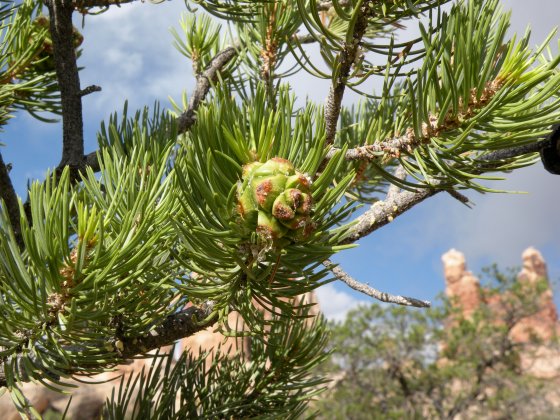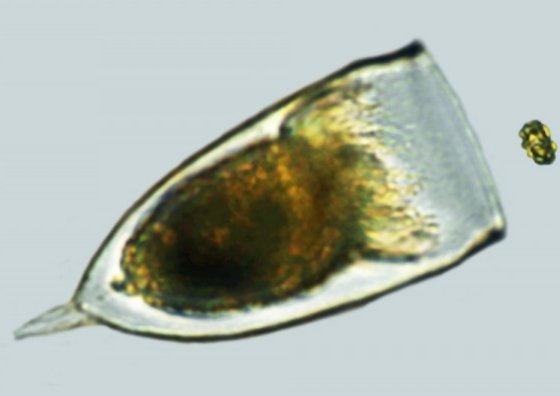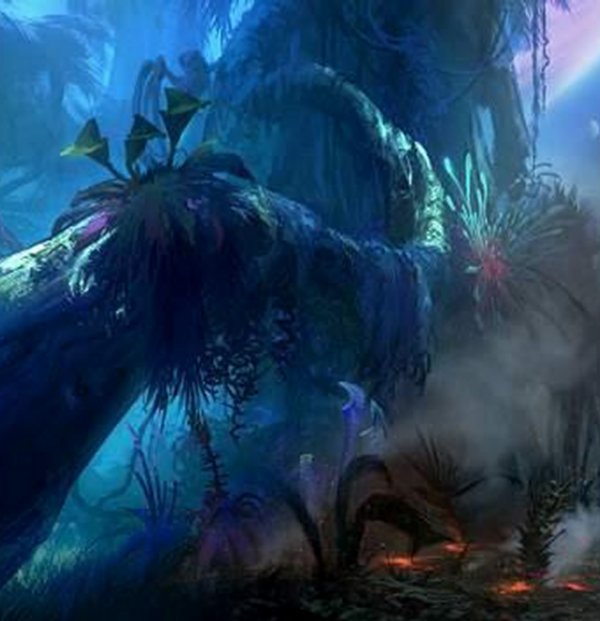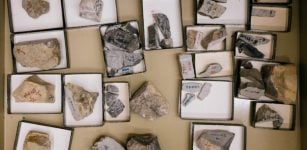10 Fascinating Facts About Plants
MessageToEagle.com – The remarkable and secret world of plants is full of discoveries that astonish us. Plants are much more complex and intelligent than we have previously believed. Not only can they sing, dance, avoid predators and much more, but they also contain hidden maps and surprises that reveal they share many similar properties with humans.
In this top list we present ten fascinating facts about plants – prepare yourself for some true amazement!
1. Plants Can Sing And Make Music
Plants are very much alive. Have you ever heard the incredible music of the plants?
Plants can actually sing and compose music and listening to it is truly beautiful and relaxing!
Ever since 1975, researchers at Damanhur, in northern Italy have been experimenting with plants, trying to learn more about their unique properties.
Researchers use devices that they have created to measure the reactivity of the plants to their environment. The devices judge the plants’ capacity to learn and communicate.
Using a simple principle, the researchers used a variation of the Wheatstone bridge, an electrical circuit used to measure an unknown electrical resistance by balancing two legs of a bridge circuit, one leg of which includes the unknown component. Although there is currently little scientific research conducted on this subject, one cannot deny that listen to these beautiful plants is a joy for the soul. Listen for yourself! Read more
2. Plants Dislike Human Noise

Credit: Clinton Francis
A growing body of research shows that birds and other animals change their behavior in response to human noise, such as the din of traffic or the hum of machinery.
But human clamor doesn’t just affect animals.
Because many animals also pollinate plants or eat or disperse their seeds, human noise can have ripple effects on plants, too. Human noise can have a damaging effect on certain plants and trees and their seed. Read more
3. Plants May Be Deaf But They Can Feel, See, Smell And Remember
Plants may be deaf, but they can feel, see, smell and remember, according to plant biologist Daniel Chamovitz. Scientists have discovered that unlocking the secrets of plant genetics could lead to breakthroughs in cancer research and food security.
In his book What a Plant Knows Prof. Daniel Chamovitz, Director of TAU’s Manna Center for Plant Biosciences, says that the discovery of similarities between plants and humans is making an impact in the scientific community.
Like humans, Prof. Chamovitz says, plants also have “senses” such as sight, smell, touch, and taste.
Ultimately, he adds, if we share so much of our genetic makeup with plants, we have to reconsider what characterizes us as humans.
These findings could prompt scientists to rethink what they know about biology, says Prof. Chamovitz, pointing out that plants serve as an excellent model for experiments on a cellular level.
This research is also crucial to food security, he adds, noting that knowledge about plant genetics and how plants sense and respond to their environment is central to ensuring a sufficient food supply for the growing population — one of the main goals of the Manna Center.
One of the most intriguing discoveries of recent years is that a group of plant genes used to regulate responses to light is also part of the human DNA. These affect responses like the circadian rhythm, the immune system, and cell division. Read more
4. Plants Can Sense Danger And They Know How To Avoid Predators

While studying microscopic marine plants and their behavior in confrontation with the predatory zooplankton Favella sp, researchers noticed that a species of phytoplankton, a microscopic marine plant known as Heterosigma akashiwo can handle dangerous situations by avoiding predators.
“The phytoplankton can clearly sense the predator is there. They flee even from the chemical scent of the predator but are most agitated when sensing a feeding predator,” said Susanne Menden-Deuer at the University of Rhode Island.
“It has been well observed that phytoplankton can control their movements in the water and move toward light and nutrients,” Menden-Deuer said. “What hasn’t been known is that they respond to predators by swimming away from them. We don’t know of any other plants that do this.” Read more
5. Plants Are Capable Of Making Complex Decisions

Plants are also able to make complex decisions, say scientists from the Helmholtz Center for Environmental Research (UFZ) and the University of Göttingen.
Based on their investigations on Barberry (Berberis vulgaris), which is able to abort its own seeds to prevent parasite infestation, researchers deliver found the first ecological evidence of complex behavior in plants.
The Barberry (Berberis vulgaris species has a structural memory, is able to differentiate between inner and outer conditions as well as anticipate future risks.
When scientists examined the seeds of the Barberry more closely, they made a surprising discovery.
“The seeds of the infested fruits are not always aborted, but rather it depends on how many seeds there are in the berries”, explains Dr. Katrin M. Meyer, who analyzed the data at the UFZ and currently works at the University of Goettingen.
If the infested fruit contains two seeds, then in 75 percent of cases, the plants will abort the infested seeds, in order to save the second intact seed.
If however the infested fruit only contains one seed, then the plant will only abort the infested seed in 5 percent of cases. ”If the Barberry aborts a fruit with only one infested seed, then the entire fruit would be lost. Instead, it appears to ‘speculate’ that the larva could die naturally, which is a possibility. Slight chances are better than none at all”, explains Dr. Hans-Hermann Thulke from the UFZ. Read more
6. Talk To Your Plants And You Help Them Grow Better
Does talking to your plants make them grow better? Researchers say: Yes!
Having a neighborly chat improves seed germination, finds research in BioMed Central’s open access journal BMC Ecology. Even when other known means of communication, such as contact, chemical and light-mediated signals, are blocked, chili seeds grow better when grown with basil plants.
This suggests that plants are talking via nanomechanical vibrations.
Monica Gagliano and Michael Renton from the University of Western Australia attempted to grow chili seeds (Capsicum annuum) in the presence or absence of other chili plants, or basil (Ocimum basilicum). In the absence of a neighboring plant, germination rates were very low, but when the plants were able to openly communicate with the seeds more seedlings grew. Read more
7. Using Glowing Plants And Trees Can Be Used As An Energy Source

Will glowing trees replace street lamps in the near future? Can glowing plants be used as a source of light?
These questions have occupied a group of scientists who have come up with an ingenious idea how to cut electricity costs and reduce light pollution.
Walking down the street a late evening you might actually find yourself surrounded by amazingly beautiful glowing trees and pants, instead of ordinary street lamps.
Researchers say that after proper optimization, threes and plants can be used to construct biological street lightning and serve as an efficient energy source.
Although the idea of using plants as sources of light may appear to be pure science fiction, scientists have successfully proved the idea is based on science and not fiction. Read more
8. There Is A Hidden Map Inside Plants
When a group of scientists asked themselves why rose petals have rounded ends while their leaves are more pointed and they noticed something unusual. Their study revealed that the shape of petals is controlled by a hidden map located within the plant’s growing buds.
Leaves and petals perform different functions related to their shape.
See also:
Flower Of Life: Ancient Sacred Geometry Symbol And Blueprint Of The Universe
Old Tjikko Is The World’s Oldest Tree
Was The Legendary Tree Of Life Located In The Grove Of Eridu?
Leaves acquire sugars for a plant via photosynthesis, which can then be transported throughout the plant. Petals develop later in the life cycle and help attract pollinators. Researchers discovered that Arabidopsis petals contain a similar, hidden map that orients growth in the flower’s bud.
However, the pattern of growth is different from that in leaves — in the petal growth is oriented towards the edge giving a more rounded shape — accounting for the different shapes of leaves and petals. Read more
9. Plants Perform Accurate And Very Sophisticated Arithmetic Calculation To Prevent Starvation At Night
Plants perform accurate arithmetic division in order to prevent starvation at night, a new study shows. The calculation allows them to use up their starch reserves at a constant rate so that they run out almost precisely at dawn.
Plants feed themselves during the day by using energy from the sun to convert carbon dioxide into sugars and starch. Once the sun has set, they must depend on a store of starch to prevent starvation.
The John Innes Centre scientists show that to adjust their starch consumption so precisely they must be performing a mathematical calculation – arithmetic division.
“The capacity to perform arithmetic calculation is vital for plant growth and productivity,” said metabolic biologist Professor Alison Smith.
“Understanding how plants continue to grow in the dark could help unlock new ways to boost crop yield.” Read more
10. Ancient Native Tobacco Plant May Help Grow Food In Space

Scientists have made a “magical” discovery. They have found a gene that will open the door for space-based food production. Professor Peter Waterhouse, a plant geneticist at QUT, discovered the gene in the ancient Australian native tobacco plant Nicotiana benthamiana, known as Pitjuri to indigenous Aboriginal tribes.
“We know, through using a molecular clock and fossil records that this particular plant has survived in its current form in the wild for around 750,000 years,” Professor Waterhouse said.
It is a magical plant with amazing properties that can help grow food in space. Read more
See also:
MessageToEagle.com
Related Posts
-
 Ubari: Beautiful Oasis In The Middle Of The Desert In Libya
No Comments | Dec 16, 2016
Ubari: Beautiful Oasis In The Middle Of The Desert In Libya
No Comments | Dec 16, 2016 -
 Mythical Beautiful Adarna Bird And Its Harmful Magical Power In Mythology Of Philippines
No Comments | Jan 25, 2017
Mythical Beautiful Adarna Bird And Its Harmful Magical Power In Mythology Of Philippines
No Comments | Jan 25, 2017 -
 Geoscientists Shed A Light On Life’s Evolution 800 Million Years Ago
No Comments | Apr 3, 2023
Geoscientists Shed A Light On Life’s Evolution 800 Million Years Ago
No Comments | Apr 3, 2023 -
 Our Universe Is A Gigantic And Wonderfully Detailed Holographic Illusion
No Comments | Aug 5, 2015
Our Universe Is A Gigantic And Wonderfully Detailed Holographic Illusion
No Comments | Aug 5, 2015 -
 Seamounts: Gigantic Elevations More Than 1,000 Meters High At The Bottom Of Ocean
No Comments | Mar 26, 2017
Seamounts: Gigantic Elevations More Than 1,000 Meters High At The Bottom Of Ocean
No Comments | Mar 26, 2017 -
 How Birds Got Their Wings – Study Focuses On The Origin Of bird Flight
No Comments | Feb 27, 2023
How Birds Got Their Wings – Study Focuses On The Origin Of bird Flight
No Comments | Feb 27, 2023 -
 10 Magnificent Ancient Libraries
No Comments | Feb 6, 2016
10 Magnificent Ancient Libraries
No Comments | Feb 6, 2016 -
 Secrets Of The ‘Worlds Of Prav, Nav And Yav’ Revealed – Ancient Slavic Wisdom Confirms The Multiverse Theory
No Comments | Oct 6, 2015
Secrets Of The ‘Worlds Of Prav, Nav And Yav’ Revealed – Ancient Slavic Wisdom Confirms The Multiverse Theory
No Comments | Oct 6, 2015 -
 12 Most Amazing Underwater Discoveries – Our Oceans Are Full Of Secrets!
No Comments | Jan 10, 2014
12 Most Amazing Underwater Discoveries – Our Oceans Are Full Of Secrets!
No Comments | Jan 10, 2014 -
 Scientists Find Plants For ‘Climate-Proof’ Chocolate
No Comments | Jul 5, 2024
Scientists Find Plants For ‘Climate-Proof’ Chocolate
No Comments | Jul 5, 2024





